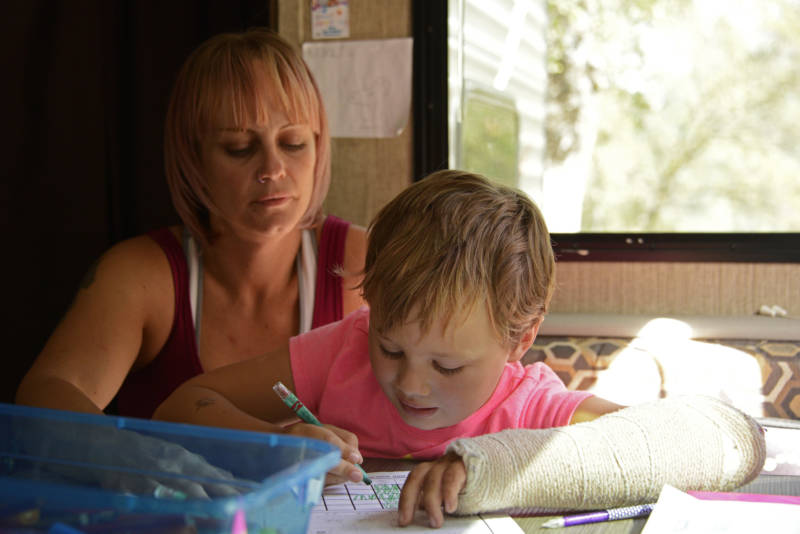Minds Scarred by Wildfire: How Disasters Linger
Sabrina Hanes fled Paradise with her young daughter as flames destroyed their home in the Camp Fire one year ago this week. We first introduced you to Sabrina and her daughter Aroara last year, in a documentary we aired the summer before the fire. KQED's Laura Klivans brought us her story as part of her reporting on adults who experienced trauma as kids. Sabrina said she’d been neglected and abused. Her parents couldn’t be there for her because of an ugly divorce, drugs and time in jail. When she moved to Paradise, she built a support network to help her become the parent she always wished she’d had. But the fire fractured that community. Laura went back to Butte County to see how Sabrina and Aroara are doing.
A Year After Camp Fire, Survivors Struggle to Find Housing and a New Normal
A year ago, when 13,000 households were displaced from Paradise and surrounding towns, there were only around 1,000 vacant units in Butte County to absorb them all. And rental prices there jumped more than 20 percent in the immediate aftermath of the Camp Fire. People lived in their cars, spare bedrooms, on couches. KQED Reporter Sonja Hutson introduces us to one family that managed to stay in Paradise. That's because they figured out a living arrangement they never planned on.
The Tiny Radio Station Relaying Critical Kincade Fire Information in Indigenous Languages
One of the lessons from the Camp Fire - and the Tubbs Fire the year before - was that officials have to issue evacuation orders more quickly. They need to have more fire crews on standby, and alert people earlier about potential fire danger. And another lesson learned: to reach out to non-English speakers in emergencies. In Sonoma County, for example, about a quarter of the population speaks a language other than English at home. One community radio station, KBBF in Santa Rosa, is a trusted place for Spanish-speakers to get the latest emergency updates. And with the most recent Kincade Fire, the station did something different: it also made sure to broadcast updates in Mixteco and Triqui, indigenous languages spoken by some immigrants from Oaxaca. Marisol Medina Cadena spent some time at KBBF during the fire, talking to volunteers who’ve been interpreting and relaying important information in Sonoma and Napa counties. She reported the story for KQED’s podcast, The Bay.

